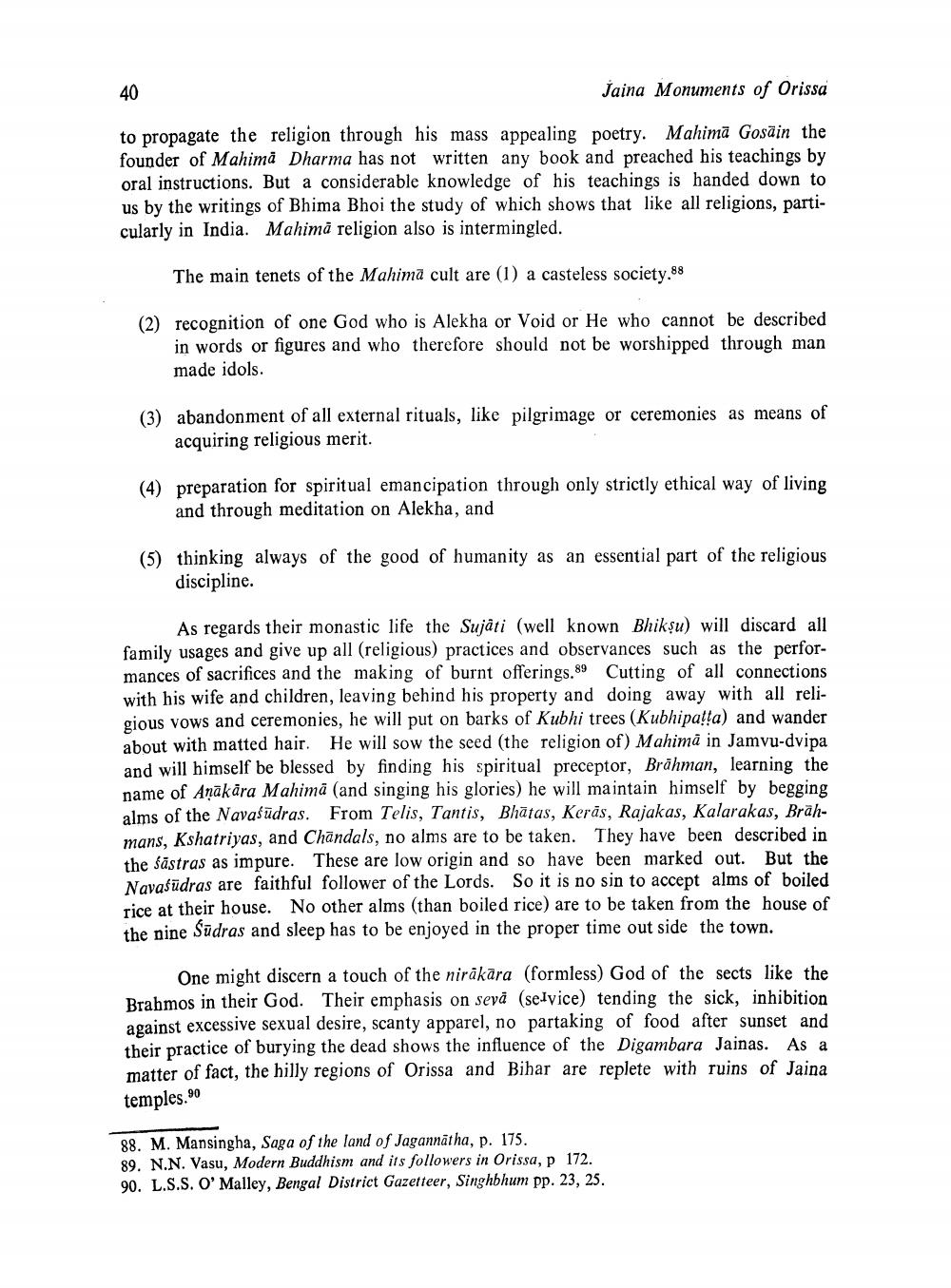________________
saina Monuments of Orissa
to propagate the religion through his mass appealing poetry. Mahimā Gosāin the founder of Mahima Dharma has not written any book and preached his teachings by oral instructions. But a considerable knowledge of his teachings is handed down to us by the writings of Bhima Bhoi the study of which shows that like all religions, particularly in India. Mahimā religion also is intermingled.
The main tenets of the Mahimā cult are (1) a casteless society.88
(2) recognition of one God who is Alekha or Void or He who cannot be described
in words or figures and who therefore should not be worshipped through man made idols.
(3) aban
abandonment of all external rituals, like pilgrimage or ceremonies as means of acquiring religious merit.
(4) preparation for spiritual emancipation through only strictly ethical way of living
and through meditation on Alekha, and
(5) thinking always of the good of humanity as an essential part of the religious
discipline.
As regards their monastic life the Sujāti (well known Bhikṣu) will discard all family usages and give up all (religious) practices and observances such as the performances of sacrifices and the making of burnt offerings.89 Cutting of all connections with his wife and children, leaving behind his property and doing away with all religious vows and ceremonies, he will put on barks of Kubhi trees (Kubhipatta) and wander about with matted hair. He will sow the seed (the religion of) Mahima in Jamvu-dvipa and will himself be blessed by finding his spiritual preceptor, Brāhman, learning the name of Anākära Mahimā (and singing his glories) he will maintain himself by begging alms of the Navašūdras. From Telis, Tantis, Bhātas, Kerās, Rajakas, Kalarakas, Brahmans, Kshatriyas, and Chandals, no alms are to be taken. They have been described in the sästras as impure. These are low origin and so have been marked out. But the Navasüdras are faithful follower of the Lords. So it is no sin to accept alms of boiled rice at their house. No other alms (than boiled rice) are to be taken from the house of the nine Sūdras and sleep has to be enjoyed in the proper time out side the town.
One might discern a touch of the nirākāra (formless) God of the sects like the Brahmos in their God. Their emphasis on sevā (selvice) tending the sick, inhibition against excessive sexual desire, scanty apparel, no partaking of food after sunset and their practice of burying the dead shows the influence of the Digambara Jainas. As a matter of fact, the hilly regions of Orissa and Bihar are replete with ruins of Jaina temples.90
88. M. Mansingha, Saga of the land of Jagannatha, p. 175. 89. N.N. Vasu, Modern Buddhism and its followers in Orissa, p 172. 90. L.S.S. O'Malley, Bengal District Gazetteer, Singhbhum pp. 23, 25.




